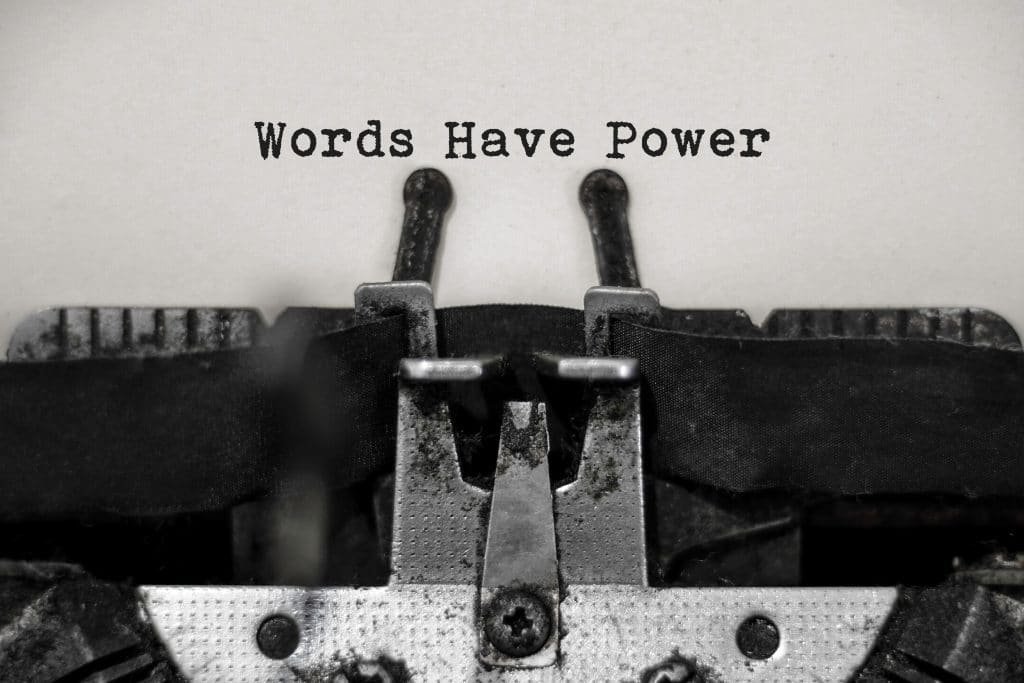Did you know people can only focus for about 8 seconds? That’s even shorter than a goldfish!
But that’s ok! Blogging is all about making short, fun content that grabs readers super-fast.
Your mission is to share your ideas quickly and clearly, catching your audience’s attention and holding onto it. Whether your post is 300 or 5000 words, the key is keeping your readers hooked.
That’s going to take some skill and a bit of good old-fashioned writing. So, how quickly can you become a better blog writer, you ask?
1. Understand Your Reader
Putting yourself in the reader’s shoes is crucial for creating content that resonates. To do this, you need to connect emotionally and understand their needs and expectations.
Let’s break this down with some real examples:
Example #1: Fashion Blog
Imagine you’re writing for a fashion blog. Your readers are likely looking for the latest trends, style tips, and shopping advice. They want to feel inspired and fashionable.
When you write a post, think about their excitement for new trends or their struggle to find the right outfit for an event. Use a conversational and upbeat tone to match their enthusiasm.
For instance, “Are you ready to turn heads at your next party? Check out these stunning outfit ideas that will make you the star of the night!”
Example #2: Medical Blog
Now, consider writing for a blog that helps people going through medical procedures. Your readers might be anxious, seeking comfort, and looking for detailed, trustworthy information. They need a compassionate and reassuring tone.
When you write, think about their fears and the clarity they need.
For example, “We understand that preparing for surgery can be stressful. Here’s a step-by-step guide to help you feel more at ease and prepared for your procedure.”
Example #3: Personal Finance Blog
If you’re writing for a personal finance blog, your readers might be looking for ways to save money, pay off debt, or invest wisely. They need practical, actionable advice. Use a straightforward and encouraging tone.
For example, “Struggling with debt? Don’t worry, you’re not alone. Here are five simple steps you can take today to start paying off your debt and regain control of your finances.”
Example #4: Parenting Blog
When writing for a parenting blog, consider the daily challenges and joys that parents experience. They might be looking for advice on raising their kids, balancing work and family, or dealing with specific issues like sleep training. Use a supportive and empathetic tone.
For example, “Are you exhausted from sleepless nights with your newborn? Here are some tried-and-true sleep training tips that can help both you and your baby get the rest you need.”
Example #5: Travel Blog
For a travel blog, your readers are likely dreaming about their next adventure or looking for tips to make their trips smoother. They want exciting and vivid descriptions that transport them to new places.
Use an enthusiastic and descriptive tone.
For example, “Ready to escape to paradise? Discover the hidden gems of Bali that will make your trip unforgettable, from pristine beaches to mouth-watering local cuisine.”
By understanding and connecting with your readers on an emotional level, you can shape your writing to meet their needs and expectations. This helps you create engaging content and builds a loyal audience that trusts and values your blog – the best kind (like you)!
2. Maintain High Standards
Have very high standards when it comes to grammar and quality prose. High standards will help you stand out against a sea of mediocre writers who churn out lots of pieces.
Writing that gets noticed by larger publications and educated readers is well-written, well-researched, and offers significant value.
This not only enhances your reputation in the writing and publishing community but also earns you higher rankings from Google, which rewards high-quality, unique, informative content.
Personally, I’m grateful that Google maintains this high standard.

- Stand Out from the Crowd:
Good writing helps you stand out from others who might not put as much effort into their work. People notice and appreciate when you write well and share good information.
- Build Your Reputation:
Writing well all the time helps you build a good reputation. People will trust you and come back to read more of your work.
- Google Likes Quality:
Google gives higher rankings to well-written, unique, and useful content. This means more people will find your blog if you write well.
How To Write High-Quality Content for Your Blog
- Proofread and Edit –
Always check your work for mistakes. Use tools like Grammarly or ask a friend to help.
J.K. Rowling’s “Harry Potter” books went through many rounds of editing to make them great.
- Do Your Research –
Make sure your facts are right. This builds trust with your readers.
Neil Patel, a digital marketing expert, is known for his well-researched blog posts, which make him a trusted source.
- Offer Value –
Your writing should give something useful to the reader, like new information or helpful tips.
Think about Sarah, a gardener. She writes about the best plants for small spaces and gives great tips on how to care for them. Her readers love her posts and always come back for more.
- Quality Over Quantity –
It’s better to write fewer posts that are really good than to write many posts that are just “okay”.
O.k., so imagine you have two bloggers’ we’ll John and Lisa. John writes quickly and publishes a lot, but his posts have many errors and are not very helpful. Lisa takes her time to research and edit her posts, even though she publishes less often.
John’s blog gets some attention at first, but readers soon get tired of the mistakes and lack of good information. Lisa’s blog, however, grows steadily because readers trust her well-written and helpful posts. She even gets offers for guest posts and sponsorships because of her good reputation.
By keeping high standards in your writing, you can make sure your readers enjoy your work, trust you, and keep coming back for more. This not only helps you build a loyal audience but also increases your chances of success.
Brian Dean from Backlinko focuses on creating detailed, super helpful posts. He might not post very often, but when he does, his readers love it and share it a lot. Brian is actually a really good example because his YouTube channel is the same way – he doesn’t post videos often, but when he does it’s like Christmas!
Gotta Love good ‘ol Brian Dean – I am absolutely addicted to his YouTube videos! Lol.
How to Write Blog Posts that Captivate Your Audience
1. Vary Sentence Lengths:
Mixing short and long sentences can create a pleasing rhythm. It keeps your writing interesting and engaging.
Example: “She opened the door. The room was dark and silent. Slowly, she stepped inside, her heart pounding with anticipation.”
Why It Works: The short sentences build tension, while the longer one adds detail and draws the reader in.
2. Use Repetition for Effect:
Repeating words or phrases can create a rhythm that makes your message stronger.
Example: “He ran. He ran faster than he ever had before. He ran until his legs burned and his lungs screamed for air.”
Why It Works: The repetition emphasizes his effort and exhaustion, making the scene more vivid.
3. Read Your Writing Aloud:
Reading your work out loud helps you hear the rhythm of your sentences. You can find and fix awkward phrases to improve the flow.
Example: If a sentence sounds clunky when you read it aloud, it probably needs to be reworked. Try different words or sentence structures until it flows smoothly.
Why It Works: Hearing your words lets you catch mistakes that you might miss when reading silently.
4. Use Punctuation to Control Pace:
Punctuation marks like commas, periods, and dashes can control the speed of your writing. Use short sentences with periods for a fast pace, and commas to slow things down.
Example: “She sprinted to the finish line. Breathless, she collapsed, feeling the cool grass beneath her.”
Why It Works: The short first sentence creates urgency, while the commas in the second sentence slow down the pace, adding a sense of relief.
By using these techniques, you can make your writing flow like music, keeping your readers engaged and making your content more enjoyable to read.
TIP!
Punctuation is crucial in your blog posts. It can completely change the meaning of your writing….so make sure you get it right!
Here’s a powerful example of how correct punctuation can change the meaning of your writing:
Without Punctuation:
“A woman, without her man, is nothing.”
With Punctuation:
“A woman, without her, man is nothing.”
5. Optimize Your Workspace and Health
Writing is a job where you sit a lot, and spending long hours hunched over can negatively impact your health.
The single best thing I did was change up my office to include a Stamina 2-in-1 Workstation – it’s a bike desk designed by an exercise company, not a desk company. It’s amazing, and I put on about 20 miles each day while staying productive.
Additionally, I incorporate rowing, planking, and stretching during work breaks. Paying attention to nutrition, sleep, and physical health will make you a better writer. When your body feels good, your mind can focus better, and your creativity flows more freely.
I’m a HUGE fan of “The 5am Club.” It has completely transformed my life and so many others. I absolutely love it and you have to try it. It’s a-m-a-z-i-n-g – seriously, do it!
You may have heard of the “20/20/20 formula” from Robin Sharma’s book, “The 5 AM Club.” Imagine waking up 60 minutes earlier every day and supercharging your morning with three powerful activities, each lasting 20 minutes.

Here’s how it works:
- 20 Minutes of Exercise: Kickstart your day with a burst of physical activity. Whether it’s a brisk jog, yoga, or a home workout, getting your body moving will pump up your energy and set a vibrant tone for the day ahead.
- 20 Minutes of Reflection: Spend this time meditating, journaling, or planning your day. Reflecting on your goals and intentions helps center your mind and creates a sense of purpose, making you feel grounded and focused.
- 20 Minutes of Learning: Dive into a book, listen to an inspiring podcast, or watch a motivational video. Stimulate your mind with new knowledge and ideas, fueling your personal growth and igniting your passion for learning.
This dynamic routine transforms your mornings into a powerful launchpad for success, boosting your productivity, and enhancing your overall well-being.
Embrace the 20/20/20 formula like I have, and I promise you will unleash your full potential – every single minute of every single day!!
6. Switch up Your Writing Style
Experimenting with different writing styles and tones is crucial for keeping your content fresh and alive!
Attract a Broader Audience:
Different people enjoy different styles of writing. By changing your style, you can attract more readers. Some might like a formal, informative tone, while others prefer a casual, conversational style. Mixing it up keeps your blog interesting for everyone.
Keep Content Interesting:
Writing in the same style all the time can get boring for both you and your readers. Changing up your style keeps your blog fresh and interesting. It helps prevent your blog from becoming stale and keeps your audience engaged.

Effective Ways to Improve Your Writing Skills
- Play Around with Different Formats
Give these a try: how-to guides, personal stories, reviews, and listicles. Each type needs a different writing style and can help you find new ways to keep your readers interested.
Match your writing style to the topic and who you’re talking to. For example, when writing about travel, make it fun and exciting. But when discussing financial planning, keep it serious and full of useful information.
Example #1: Travel Blog
Light-Hearted Tone: “Ready for an adventure? Pack your bags and join me on a journey to the breathtaking beaches of Bali. From surfing the waves to savoring delicious local cuisine, here’s everything you need to know for an unforgettable trip!”
Informative Tone: “Bali is a popular travel destination known for its stunning beaches and rich culture. In this guide, we’ll explore the top attractions, best times to visit, and essential travel tips to help you plan your perfect vacation.”
Example #2: Personal Finance Blog
Conversational Tone: “Ever feel like you’re drowning in debt? You’re not alone! Here are some simple steps I took to get my finances back on track, and you can too.”
Formal Tone: “Managing debt effectively requires a strategic approach. This article outlines key strategies for reducing debt and improving financial stability, including budgeting, debt consolidation, and financial planning.”
- Use Different Perspectives:
Write from various perspectives to keep your content diverse. You can write in the first person to make it personal and relatable, or use the third person for a more objective and authoritative tone.
Example: Health Blog
First Person: “When I started my journey to better health, I was overwhelmed. Here’s what I learned along the way and how it transformed my life.”
Third Person: “Improving one’s health can be a challenging journey. This article explores the key steps individuals can take to enhance their well-being and achieve their health goals.”
- Mix in Personal Stories:
Sharing your own experiences can make your writing more relatable and engaging. Personal stories add a unique touch that readers can connect with.
Example: Fitness Blog
“I remember the first time I tried running; I could barely make it around the block. But with persistence and a good training plan, I eventually completed my first marathon. Here’s how you can get started on your own running journey too!”
Don’t be afraid to try out different ways of writing. I know a travel blogger who was having a hard time getting readers. She had nothing to lose so she dramatically changed her writing style completely – from serious and informative to fun and chatty. The result? WHOA.
Because of this, sooooo many more people started reading her blog, and she got a lot of messages from people saying they just loved her new, fun style. Total game changer to say the least.
I have another example! This one’s about a food blogger who started sharing short stories about what happens ‘behind the scenes’ when they cook. He went from this ultra formal and professional food blogger, to a “hey, this is what really happens” style of writing. What happened next?
This change turned is 3 figure a month blog into a 5 figure a month blog! His posts were WAY MORE enjoyable, for not only his readers but for himself! He said he fell in love with writing all over again, because he felt like he had finally let his guard down and became HIMSELF again.
The moral of the story? When you write, think about how you would want to read it. Write like you’re talking or thinking – it should sound natural! People want to read something that feels real. Look at all the successful blogs out there, and you’ll see they all have that in common!
- Ask for Feedback:
Building a successful blog isn’t just about writing great content; it’s also about engaging with your readers.
Encourage your readers to share their thoughts on your writing style. Their feedback can provide valuable insights and help you refine your approach.
I will keep this one simple – respond to comments!
By trying out different styles and tones, you can keep your blog interesting and attract a wide range of readers. Don’t be afraid to step out of your comfort zone and experiment with new approaches – it can lead to exciting discoveries and improvements in your writing.
Implement the strategies above, and you’ll improve your writing, connect more deeply with your readers, and ultimately make more money blogging.
Just remember, the key to successful blogging is not just about the quantity of posts but the quality and connection each post brings to your audience.

F.A.Q.S
How do you write an effective blog post?
If you want to write an effective blog post, start by de-stressing! Make it fun, and it will come easily!
Here’s how you do that, in a nutshell……
- Pick a Cool Topic: Choose something your readers care about.
- Find Good Keywords: Use words people search for a lot.
- Organize Your Post: Use headings and short paragraphs to make it easy to read.
- Be Engaging: Write like you’re talking to a friend and use fun examples.
- Use SEO Tricks: Add important words in titles and links (see #2).
- Add Visuals: Use pictures and videos to make it interesting.
- Share Your Post: Tell everyone about it on social media.
What is the best writing style for a blog post?
The best writing style for a blog post is friendly and fun, like talking to a friend. Use short sentences and paragraphs to make it easy to read. Break up your text with subheadings and bullet points. Add personal stories and examples to connect with your readers.
Keep your language simple and clear, and use pictures or videos to make your post more interesting. Most importantly, make sure your content is useful and interesting for your audience.
How do I improve my blog writing?
If you’re hoping to learn how to improve your blog writing, there are a few things that can really help you.
Such as:
- Read a Lot: The more you read, the better you’ll write.
- Practice Regularly: Write as often as you can to hone your skills.
- Get Feedback: Ask friends or readers for their opinions on your writing.
- Edit Carefully: Always revise your posts to catch mistakes and improve clarity.
- Learn SEO Basics: Understand how to use keywords to get more readers.
- Use Engaging Titles: Make sure your titles grab attention.
Which type of blog is best to earn money?
The best types of blogs to earn money typically include:
- Personal Finance: Offering tips on saving, investing, and managing money.
- Health and Fitness: Sharing workout routines, diet plans, and wellness advice.
- Food and Cooking: Providing recipes, cooking tips, and restaurant reviews.
- Lifestyle: Covering a variety of topics such as travel, fashion, and home decor.
- Tech and Gadgets: Reviewing the latest technology and gadgets.
- Parenting: Offering advice and tips for parents.
These niches attract a large audience and can be monetized through ads, sponsored posts, and affiliate marketing.








